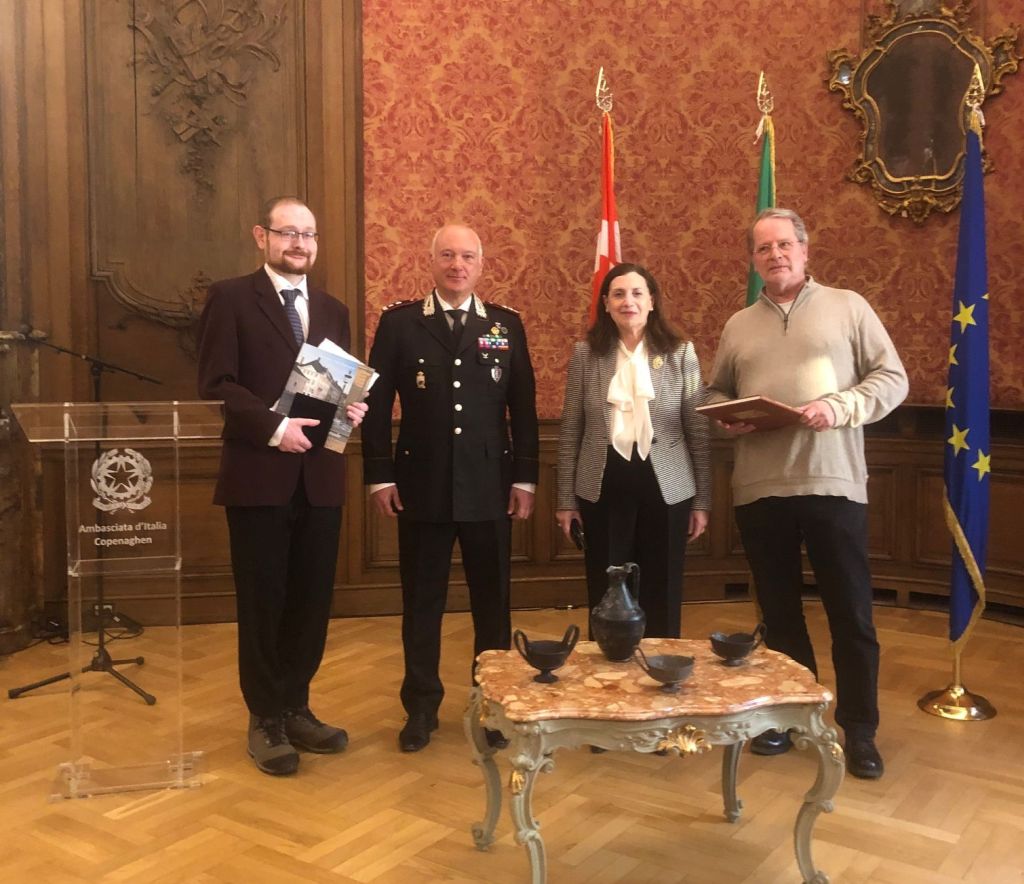ROME (ITALPRESS) – At the headquarters of the Italian Embassy in Copenhagen, Ambassador, Stefania Rosini, welcomed General Pietro Francesco Salsano, Commander of the Carabinieri’s Specialized Mobile Units Division, for the ceremony of the return of four archaeological artifacts that were in the possession of two Danish citizens as a result of family bequests. These were three fragmentary Etruscan bucchero of the “kantaros” type and one Etruscan bucchero of the “oinochoe” type, which can be traced back to the 6th century B.C. and came from sites in central and southern Etruria. Approximate value quantified at about 5,000 euros.
The four artifacts, due to their morphological and stylistic characteristics, can be traced back to well-known archaeological areas of the Italian territory such as Cerveteri and Tarquinia, probably in the past illegally taken from those lands rich in ceramic production and sold abroad through the illegal market. The goods still show the earthy residues and fractures typical of forced removal through illicit excavations. The Italian Embassy in Copenhagen, at the request of the two Danish citizens, proceeded to take charge of the four artifacts, expressing formal thanks for the spontaneity of the gesture aimed at restitution in favor of the Italian state.
– photo press office Carabinieri for the Protection of Cultural Heritage –
(ITALPRESS).

